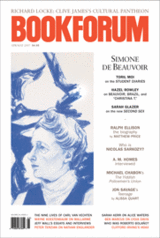
While ferociously pious, Jonathan Edwards was also way into metaphysics. Thanks to Jeremiah Dummer's gift of five hundred volumes, which began making their way into the Yale library in 1714, the undergraduate Edwards enthusiastically discovered Descartes, Arnauld, Locke, and—most crucially for Joan Richardson's A Natural History of Pragmatism—an edition of Isaac Newton's Opticks (1704), which Edwards read time and time again. From the repetition of Samuel Clarke's Latin translation of Newton's English version of Opticks, Richardson finds etched into Edward's later sermonic rhetoric a prismatic network of "light" (lumen), and from this link, she distills her fascinating premise: Attention to these sorts of lexical echoes will get us from the cadences of Calvinism to the experiments of Wallace Stevens and Gertrude Stein.
Understanding Newton's influence on Edwards involves looking closely at the Puritan version of biblical typology, in which everything from prophetic anticipations of the Messiah's arrival to the question of who is elect is encrypted in the flickering details of the observable world. Such a schema amounts for Richardson to a radical empiricism, in which extended bodies and scriptural markings are seen as part of the same perceptual continuum. Here the typological template amounts not so much to an allegorical cipher as to an adaptive dynamic of readerly experience, the DNA-like mutation of which leads over time to unforeseeably new literary morphologies.
Addressing the oft-recognized (and contested) genealogical continuum bridging Edwards and Ralph Waldo Emerson, Richardson finds an attunement to word patterning borne out in Emerson's idiosyncratic inheritance of the sermon form. One of the great things about Richardson's reading of Emerson is her attention to the outré side of the Sage of Concord: the part of Emerson that professed—in his fractured, aphoristic version of the sermon—a deep, pantheistic kinship with blocks of quartz and centipedes (he said of his first book, Nature [1836], that he wanted it to "smell of pines and resound with the hum of insects," channeling Edwards's youthful essay on the flying spider). But Emerson is also the heretical hinge swinging from the earlier theologian's doctrinal piety to the secularism of William James's The Varieties of Religious Experience (1902), the filigreed perspectivism of James's brother Henry's late novels, and the pagan aestheticism of Stevens's "Sunday Morning." For Richardson, Emerson's quarrel with the Unitarian ministry was as much the result of his growing fascination with new disciplines like comparative anatomy, geology, and probability theory as it was due to his boredom with dogmatic rituals.
One of the more provocative lines of inquiry Richardson takes up in her work on Stevens is the relation of poetry to physics. As the author of the definitive biography of the poet, she is able to make the transition from vers libre to quantum mechanics against a solid backdrop of Stevensian minutiae. The crucial event here is Stevens's recitation of "An Ordinary Evening in New Haven" in 1949 at the Connecticut Academy of Arts and Sciences." From this event, Richardson assembles a sort of Venn diagram, throwing musical architecture, the new physics, and the mnemonic patterning of free verse into fugal animation around a gloss on Stevens's quirky early lyric "Peter Quince at the Clavier."
A leitmotif throughout the book is the idea that in treating the span of literary history from Edwards to Stevens (the final chapter, on Stein, is really a kind of coda) as a quasi-genetic series of transmissions and fruitful accidents, we are at the same time staging the way the aesthetic increasingly comes to replace the scriptural as a means for religious experience. The natural sciences—most centrally for Richardson, biology, astronomy, theoretical physics, and cognitive science—play a crucial role in this story as, to use Emerson's wording, the "world becomes a more amazing puzzle" the more its hidden intricacies are unveiled. Literary innovation is then here linked to scientific innovation insofar as both are "experimental," and as the collection of data about the natural world parallels the invention of new ways of talking and writing, this disciplinary distinction becomes increasingly blurred.
Part of what is so provocative about Richardson's book is the way the Darwinian language of mutation and selection wildly enlarges the time scale of literary analysis. Like the longue durée of Ferdinand Braudel, the appeal to the organism's history—rather than, say, the nation's, the culture's, or a genre's—puts these texts on a continuum stretching all the way back to primordial protogrammars of pattern recognition (Emerson also said: "Language is fossil poetry"). Marshaling the language of evolution in a way at once more supple and more exciting than, say, Franco Moretti's sociology of the novel, Richardson injects new life into the fine art of close reading. And instead of dredging up worn-out debates about whether pragmatism amounts to a plainspoken antidote to more theoretical discourses in the humanities or demoting the experimental philosophies of the nineteenth century to a bit part in a world-historical, crypto-Hegelian script, Richardson convincingly situates thinkers like Emerson, James, and Dewey in an intellectual framework that includes innovative empiricists like Pierre Laplace, George Cuvier, and Adolphe Quetelet (not to mention Whitehead, Bohr, and Clark). What really makes Richardson's book such a joy, though, is the way her own prose takes its place in the lineage she artfully traces.
Paul Grimstad's writing has appeared in Parallax, the Journal of Modern Literature, and Spinning Jenny.
*Editor's note: A few emendations have been made to the on-line edition of the text.

